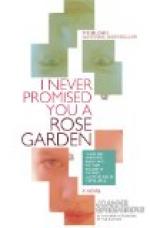Among all the numerous birds that flit through the trees as visitors, or else stay with us and nest in secluded places, how comparatively few do we really depend upon for the aerial colour and the song that opens a glimpse of Eden to our eager eyes and ears each year, for our eternal solace and encouragement? There are some, like the wood thrush, song-sparrow, oriole, robin, barn-swallow, catbird, and wren, without which June would not be June, but an imperfect harmony lacking the dominant note.
[Illustration: LONGFELLOW’S GARDEN.]
Down close to the earth, yes, in the earth, the same obtains. Upon how few of all the species of annuals listed does the real success of the summer garden rest? This is more and more apparent each year, when the fittest are still further developed by hybridization for survival and the indifferent species drop out of sight.
We often think erroneously of the beauty of old-time gardens. This beauty was largely that of consistency of form with the architecture of the dwelling and simplicity, rather than the variety, of flowers grown. Maeterlinck brings this before us with forcible charm in his essay on Old-Fashioned Flowers, and even now Martin Cortright is making a little biography of the flowers of our forefathers, as a birthday surprise for Lavinia. These flowers depended more upon individuality and association than upon their great variety.
First among the worthy annuals come sweet peas, mignonette, nasturtiums, and asters, each one of the four having two out of the three necessary qualifications, and the sweet pea all of them,—fragrance and decorative value for both garden and house. To be sure, the sweet pea, though an annual, must be planted before May if a satisfactory, well-grown hedge with flowers held on long stems well above the foliage is to be expected, and in certain warm, well-drained soils it is practicable to sow seed the autumn before. This puts the sweet pea a little out of the running for the hirer of a summer cottage, unless he can have access to the place early in the season, but sown thinly and once fairly rooted and kept free from dead flowers and pods, the vines will go on yielding quite through September, though on the coming of hot weather the flower stems shorten.
I often plant seeds of the climbing nasturtium in the row with the sweet peas at a distance of one seed to the fist, the planting not being done until late May. The peas mature first, and after the best of their season has passed they are supplanted by the nasturtiums, which cover the dry vines and festoon the supporting brush with gorgeous colour in early autumn, keeping in the same colour scheme with salvia, sunflowers, gaillardias, and tritomas. This is excellent where space is of account, and also where more sweet peas are planted for their early yield than can be kept in good shape the whole season. Centaurea or cornflower, the bachelor’s button or ragged




